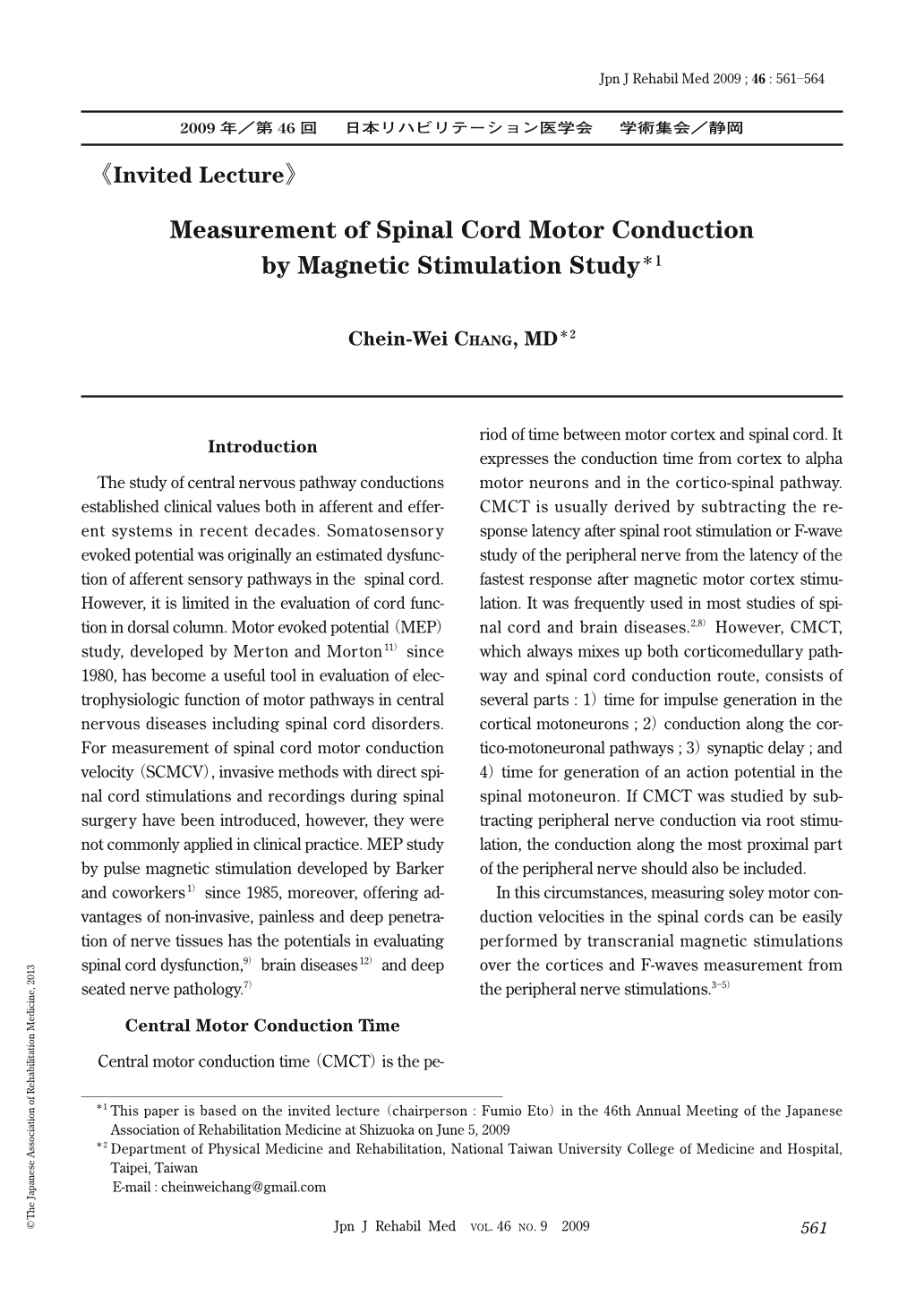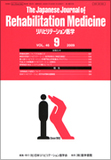Japanese
English
- 販売していません
- Abstract 文献概要
- 1ページ目 Look Inside
- 参考文献 Reference
Introduction
The study of central nervous pathway conductions established clinical values both in afferent and efferent systems in recent decades. Somatosensory evoked potential was originally an estimated dysfunction of afferent sensory pathways in the spinal cord. However, it is limited in the evaluation of cord function in dorsal column. Motor evoked potential (MEP) study, developed by Merton and Morton11)since 1980, has become a useful tool in evaluation of electrophysiologic function of motor pathways in central nervous diseases including spinal cord disorders. For measurement of spinal cord motor conduction velocity (SCMCV), invasive methods with direct spinal cord stimulations and recordings during spinal surgery have been introduced, however, they were not commonly applied in clinical practice. MEP study by pulse magnetic stimulation developed by Barker and coworkers1)since 1985, moreover, offering advantages of non-invasive, painless and deep penetration of nerve tissues has the potentials in evaluating spinal cord dysfunction,9)brain diseases12)and deep seated nerve pathology.7)
Introduction
The study of central nervous pathway conductions established clinical values both in afferent and efferent systems in recent decades. Somatosensory evoked potential was originally an estimated dysfunction of afferent sensory pathways in the spinal cord. However, it is limited in the evaluation of cord function in dorsal column. Motor evoked potential (MEP) study, developed by Merton and Morton11)since 1980, has become a useful tool in evaluation of electrophysiologic function of motor pathways in central nervous diseases including spinal cord disorders. For measurement of spinal cord motor conduction velocity (SCMCV), invasive methods with direct spinal cord stimulations and recordings during spinal surgery have been introduced, however, they were not commonly applied in clinical practice. MEP study by pulse magnetic stimulation developed by Barker and coworkers1)since 1985, moreover, offering advantages of non-invasive, painless and deep penetration of nerve tissues has the potentials in evaluating spinal cord dysfunction,9)brain diseases12)and deep seated nerve pathology.7)

Copyright © 2009, The Japanese Association of Rehabilitation Medicine. All rights reserved.


